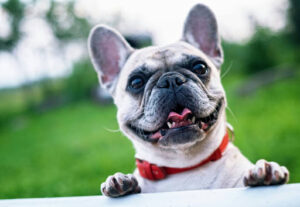Grooming Your Furry Friend Survive the Scorching Heat
As the mercury rises, summer brings bright days and outdoor fun, but for our furry companions, the heat can be more than just a nuisance—it can be life-threatening. Dogs, unlike humans, don’t sweat out excess body heat. Instead, they pant and rely on a few sweat glands in their paws.
This makes them particularly vulnerable to heatstroke during the scorching summer months. Dogs can suffer from overheating much more quickly than their human friends, as their primary cooling method is panting rather than sweating.
This inherent vulnerability means that as pet owners, we have a significant responsibility to ensure their summer days are safe as well as enjoyable. By taking a few proactive steps, you can make the hot weather more bearable for your dog and avoid dangerous situations like heatstroke.
Recognize the Signs of Overheating
Recognizing when your pet is overheating could literally be a lifesaver. The primary symptoms to watch for include excessive panting, drooling, and reddened gums. These can escalate to more alarming signs such as vomiting, diarrhea, or disorientation.
If your pet exhibits any of these symptoms, it’s essential to act quickly to cool them down and consult a veterinarian. Regular monitoring during hot weather can help catch these signs early and keep your pet safe.
Create a Cool Sanctuary
Inside your home, maintain a comfortable and cool environment in areas where your pet likes to relax. Utilizing fans or air conditioning can significantly reduce the risk of overheating. Outdoors, ensure there’s always a shady spot available, whether under trees or an artificial shelter. Using an electric fence for dogs can help keep them within designated cool areas, safely away from sun-trapped spots that might tempt an unsupervised wander.
Hydration is Key
Hydration cannot be overstated. During hot weather, your pet’s water requirement will increase. Providing multiple shaded water stations, both indoors and out, encourages your dog to drink regularly. For dogs that are less inclined to hydrate adequately, consider enticing them with flavored water or integrating wet foods into their diet to increase fluid intake.
Adjust Exercise Routines
The timing of walks or runs should be adjusted according to the day’s heat. Stick to early morning or late evening schedules when the sun’s intensity is less severe. Always be mindful of the surface you walk on as asphalt can get hot enough to burn your dog’s paws. Consider grassy routes or shaded paths as cooler alternatives. During walks, carry water and take frequent breaks.
Consider Cooling Accessories
Cooling vests or collars can be excellent aids in managing your dog’s body temperature. Make sure these accessories fit well and are properly maintained to provide maximum cooling benefits. They work by mimicking the evaporative cooling process, similar to sweating in humans. Although helpful, these should complement other cooling methods like shade and water, not replace them.
Never Leave Your Pet in the Car
This point must be emphasized more. A car can become an oven very quickly, even with the windows down. Heatstroke can occur in minutes and can be fatal. If you must run errands, leave your pet at home, where it is cooler and safer.
Offer a Cool Treat
Pets love treats, and cold treats can help them cool down. Consider freezing chicken broth in ice cube trays, or preparing homemade dog-friendly ice cream. These treats are not only refreshing but also provide hydration and a fun, tasty way to beat the heat.
Groom Regularly
Proper grooming enhances a dog’s ability to cope with heat. A well-maintained coat allows better air circulation close to the skin. For long-haired breeds, a summer trim may be beneficial. However, never shave your dog without consulting a professional, as their coat also protects them from sunburn.
Be Mindful of Breed-Specific Needs
Every breed has its unique characteristics and challenges with heat. Short-nosed breeds are particularly at risk for respiratory difficulties in hot weather, requiring extra vigilance and perhaps more indoor time. Always adapt your cooling strategies to fit your specific breed’s health requirements and comfort levels.
Monitor and Adapt
Staying informed about the weather and adjusting your pet care routine accordingly is vital for your dog’s health. If an unexpected heat wave hits, be ready to make immediate changes to your plans. Continuous observation will help you see how your pet is handling the heat and when to make necessary adjustments.
Use Sunscreen for Pets
Just like humans, dogs can get sunburned, especially those with short or light-colored coats. Apply a pet-safe sunscreen to your dog’s nose, ears, and any other exposed areas before spending time outdoors. Reapply as needed, particularly if your dog enjoys swimming.
Provide a Cooling Bed
Consider investing in a cooling bed for your pet to use during the summer. These beds are designed to provide a cool surface for your dog to lie on, helping to dissipate heat away from their body. Place the cooling bed in a shady area to enhance its effectiveness.
Build a Puppy Pool
If you have space, a small kiddie pool filled with cool water can be a delightful retreat for your dog. Many dogs love splashing around in water, and it’s a great way for them to cool down quickly. Always supervise your pet to ensure they’re safe and comfortable
Train Your Dog to Drink from a Water Bottle
For active dogs, training them to drink from a water bottle designed for pets can be highly beneficial. This skill is particularly useful during long walks or trips when something other than carrying a bowl is feasible. It ensures your dog stays hydrated no matter where you are.
Schedule Grooming Sessions
Regular grooming sessions help keep your dog’s coat in optimal condition for summer. A de-shedding treatment can reduce the bulk of hair and improve airflow to the skin. Always check with a professional groomer to determine the best grooming routine for your dog’s specific breed and coat type.
Educate Yourself on Emergency Procedures
Knowing what to do in an emergency can be a lifesaver. Familiarize yourself with the steps to take if your dog suffers from heatstroke, including how to cool them down and when to seek veterinary care. Keeping your vet’s contact information handy and knowing the location of the nearest emergency animal hospital is crucial.
Create Frozen Toys
Keep your dog entertained and cool by creating frozen toys. Freeze their favorite chew toys inside a block of ice, allowing them to lick and play to get to them. This activity not only cools them down but also stimulates their mind.
Avoid Hot Sand and Rocks
When at the beach or near rocky areas, be mindful of hot sand and rocks which can burn your dog’s paws. Early morning or late evening visits are safer and more comfortable for your pet. Consider dog booties if you must walk in potentially hot areas.
Use a Mist Sprayer
A portable mist sprayer can be a refreshing tool during walks. Periodic misting can help keep your dog cool. If you’re spending time outdoors, setting up a misting fan where your dog can lie down and relax can also be very effective.
Keep Indoor Environments Cool
During extreme heat, keep your home as cool as possible for your pets. If you don’t have air conditioning, use fans strategically placed to create a cross breeze. Block out sun by closing curtains during the hottest part of the day to keep indoor temperatures lower.
By following these guidelines, you ensure that your pet enjoys a safe and comfortable summer. Remember, our pets rely on us to help them through these challenging times. Let’s commit to keeping them cool, hydrated, and happy throughout the heatwave. Your proactive care will make a significant difference in their health and well-being during the summer months.






